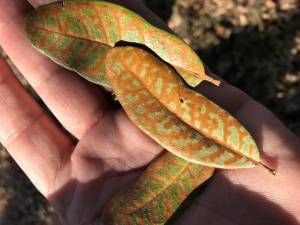Texas is home to 3 types of oaks: red, white and live, and also all are prone to a deadly fungus called oak wilt. It is just one of the most destructive tree conditions in the United States, as well as it’s rapidly changing the landscape of Texas– specifically Central Texas.

Jim Houser is regional woodland health planner for the Texas A&M Forest Service, and also he claims oak wilt has been an issue for longer than most likely realize.
“It was initial detected in Dallas in ’61, yet after that not definitively diagnosed until the late ’80s,” Houser says. “It possibly appears like it was right here in the ’30s.”
Houser claims oak wilt has been ravaging. He states a University of Minnesota professor that’s researched the disease claimed it had the prospective to be one of the most devastating tree illness in UNITED STATE history. In truth, a lot of the damage has been limited to Texas.
” We’ve shed countless trees,” Houser says.
Houser says learning more about oak wilt is very important, also for those that don’t have their own trees to care for. His objective is to get the word out to ensure that everybody becomes aware of the trouble.
“The message we’re attempting to venture out is that avoidance is what you want,” Houser says. “You prevent it by avoid[ing] wounding the trees February through June; trimming is hurtful.”
Moreover, He says tree owners need to “wound paint” their oaks when they do prune. That suggests utilizing latex spray paint on locations that have been cut in order to prevent sap-feeding beetles from entering the tree as well as spreading the fungus that creates the wilt.
Houser says once a tree gets oak wilt, it can conveniently spread out via interconnected root systems among surrounding trees.
“It’s unusual to find a private oak fallen victim to it, but once it does, there are root connections to the surrounding oaks,” Houser says.
That’s exactly how the disease spreads, specifically in live oaks.
For infected red oaks, Houser says the very best thing to do is to get rid of the tree, and also shed it to kill the fungus.
” It’s that warm that kills it,” Houser states that “Even if you [just] mulch it, mulch piles heat up; it’s a heat-sensitive fungus.”


